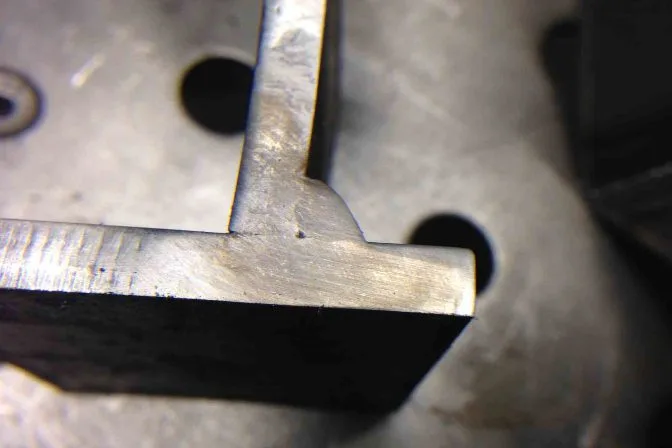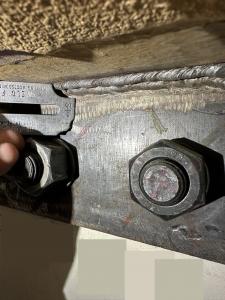How Welding Inspection Racine Guarantees Security and Compliance
How Welding Inspection Racine Guarantees Security and Compliance
Blog Article
Ingenious Techniques to Fillet Weld Examination and Screening: Enhancing Weld Top Quality and Conformity Standards
In the realm of welding, the quality and integrity of fillet welds play a crucial role in guaranteeing the structural soundness and reliability of various commercial parts. With the continuous drive for enhanced effectiveness and compliance with strict standards, the expedition of cutting-edge strategies to fillet weld examination and screening has actually come to be important. As industries evolve, the traditional methods might no more be adequate in fulfilling the demands of modern welding applications. By accepting advanced technologies and methodologies, a new perspective of opportunities arises in the world of weld top quality analysis and adherence to conformity standards.
Advanced Non-Destructive Testing Approaches
Making use of advanced technologies, progressed non-destructive testing approaches play an important role in making certain the stability and quality of fillet welds. These approaches, such as phased range ultrasonic screening (PAUT) and magnetic particle screening (MPT), offer in-depth insights right into the weld's internal framework without creating any damages to the material. PAUT, for circumstances, utilizes numerous ultrasonic elements to check the weld from different angles, supplying a comprehensive visualization of prospective issues like lack of combination or fractures.
By employing these innovative non-destructive screening strategies, weld examiners can precisely evaluate the quality of fillet welds, ensuring conformity with market standards and regulations. The capacity to identify problems early on not only enhances weld top quality yet likewise avoids costly rework or failings in structural integrity, underscoring the relevance of these ingenious testing strategies in welding assessments.
Robotics and Automation in Assessment
The combination of robotics and automation has changed the examination process for fillet welds, boosting performance and accuracy in quality analysis. Robotics provide precise control and repeatability in inspecting welds, making certain regular and reputable outcomes. Automated systems can be configured to comply with specific inspection courses, guaranteeing extensive protection of welds and decreasing the risk of human error.
Robotic assessment systems geared up with innovative sensing units can discover and measure weld attributes with high precision, providing detailed information for analysis. These systems can recognize defects such as fractures, absence of fusion, and porosity, making it possible for prompt rehabilitative actions to be taken. Furthermore, robotics and automation permit real-time data collection and evaluation, giving immediate comments to drivers and facilitating quick decision-making procedures.
In addition, making use of robotics and automation in fillet weld assessment enhances total performance by reducing evaluation times and boosting examination throughput. By streamlining the evaluation process, makers can make certain weld top quality and conformity standards are met effectively, eventually causing set you back financial savings and boosted item top quality.
Making Use Of Artificial Intelligence for Evaluation
Man-made intelligence plays a crucial function in enhancing the performance and accuracy of evaluation in fillet weld evaluation procedures. AI algorithms can swiftly process substantial quantities of data from weld assessments, spotting issues or variances that might be challenging to recognize with the naked eye - Welding Inspection Racine.
In addition, AI systems can learn from previous inspection data, consistently enhancing their capacity to identify prospective issues and deviations in fillet welds. This adaptive discovering capacity enhances the general quality assurance procedure, reducing the possibility of human error and making sure that welds fulfill the required standards. By integrating expert system right into fillet weld evaluation, sectors can achieve higher levels of efficiency, consistency, and compliance in their assessment techniques.
Portable Devices for On-Site Examination
 Enhancing field assessment performance, the adoption of portable tools reinvents on-site analysis procedures for fillet welds. These devices offer flexibility and benefit, enabling assessors to perform comprehensive assessments in different places, consisting of tough or remote settings. Mobile devices such as ultrasonic testing devices, magnetic particle inspection devices, and digital radiography see this here systems offer real-time data and high-resolution imaging capabilities, enabling quick decision-making and immediate feedback on weld quality.
Enhancing field assessment performance, the adoption of portable tools reinvents on-site analysis procedures for fillet welds. These devices offer flexibility and benefit, enabling assessors to perform comprehensive assessments in different places, consisting of tough or remote settings. Mobile devices such as ultrasonic testing devices, magnetic particle inspection devices, and digital radiography see this here systems offer real-time data and high-resolution imaging capabilities, enabling quick decision-making and immediate feedback on weld quality.One significant benefit of mobile devices is their capacity to simplify examination treatments, lowering downtime and boosting total performance. Examiners can quickly carry these tools to different work websites, getting rid of the requirement for moving hefty equipment or elements to off-site facilities. Additionally, the transportability of these devices promotes cost-effectiveness by reducing transportation expenses and increasing examination timelines.
Moreover, making use of mobile devices for on-site assessment advertises positive quality control measures, as assessors can immediately determine and deal with any type of potential welding problems or inconsistencies. By incorporating these cutting-edge innovations right into on-site evaluation techniques, welding experts can ensure conformity with sector requirements and boost weld high quality, eventually leading to enhanced structural stability and safety and security in various welding applications.
Assimilation of Data Administration Equipment
Having enhanced on-site examination procedures with the application of portable devices, the following phase includes the smooth assimilation of data administration systems to better enhance effectiveness and information evaluation capabilities in fillet weld evaluation and screening. Welding Inspection Racine. By incorporating information management systems into the assessment procedure, companies can streamline data collection, storage, and analysis. This combination enables real-time surveillance of weld quality, immediate identification of flaws, and punctual decision-making to fix any issues that may occur throughout the assessment procedure
Information monitoring systems play an important function in systematizing examination information, facilitating easy access for authorized personnel, and guaranteeing data stability and safety. With the assimilation of these systems, assessors can produce thorough records, track historic information for pattern analysis, and enhance overall process efficiency. Additionally, the integration of official source information monitoring systems enables smooth communication in between various stakeholders associated with the inspection process, cultivating cooperation and boosting total quality assurance procedures. Ultimately, the assimilation of information management systems offers to boost the requirements of fillet weld evaluation and testing, making certain conformity with sector laws and improving weld high quality.
Conclusion
Finally, ingenious approaches to fillet weld assessment and screening have significantly improved weld top quality and compliance standards. Advanced non-destructive testing approaches, robotics, automation, expert system, mobile tools, and information management systems have changed the method weld inspections are carried out. By utilizing these innovations, sectors can guarantee that welds fulfill the required high quality criteria and policies, ultimately enhancing total effectiveness and safety and security in welding processes.

By employing these sophisticated non-destructive screening methods, weld examiners can accurately evaluate the top quality of fillet welds, guaranteeing conformity with market standards and regulations. Portable tools such as ultrasonic testing gadgets, magnetic bit inspection tools, and electronic radiography systems offer real-time data and high-resolution imaging abilities, making it possible for fast decision-making and instant comments on weld top quality.
Having enhanced on-site inspection processes through the usage of portable tools, the following stage entails the smooth assimilation of information monitoring systems to even more improve performance and information analysis abilities in fillet weld examination and screening (Welding Inspection Racine). Eventually, the combination of data management systems offers to raise the standards of fillet weld examination and testing, guaranteeing compliance with market policies and boosting weld high quality
 In Visit This Link verdict, ingenious methods to fillet weld inspection and screening have significantly boosted weld high quality and compliance requirements.
In Visit This Link verdict, ingenious methods to fillet weld inspection and screening have significantly boosted weld high quality and compliance requirements.Report this page